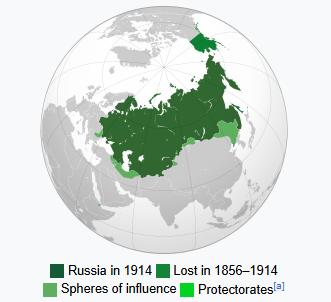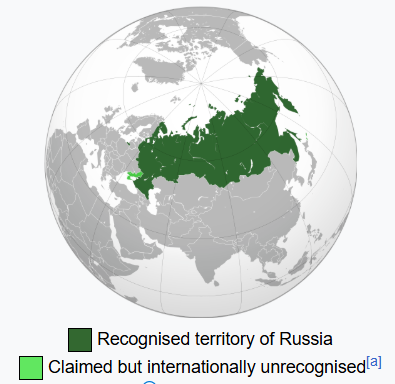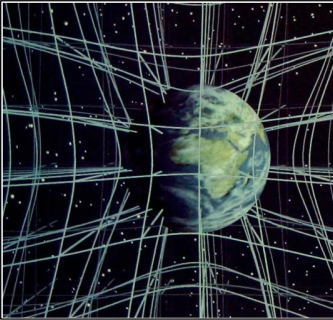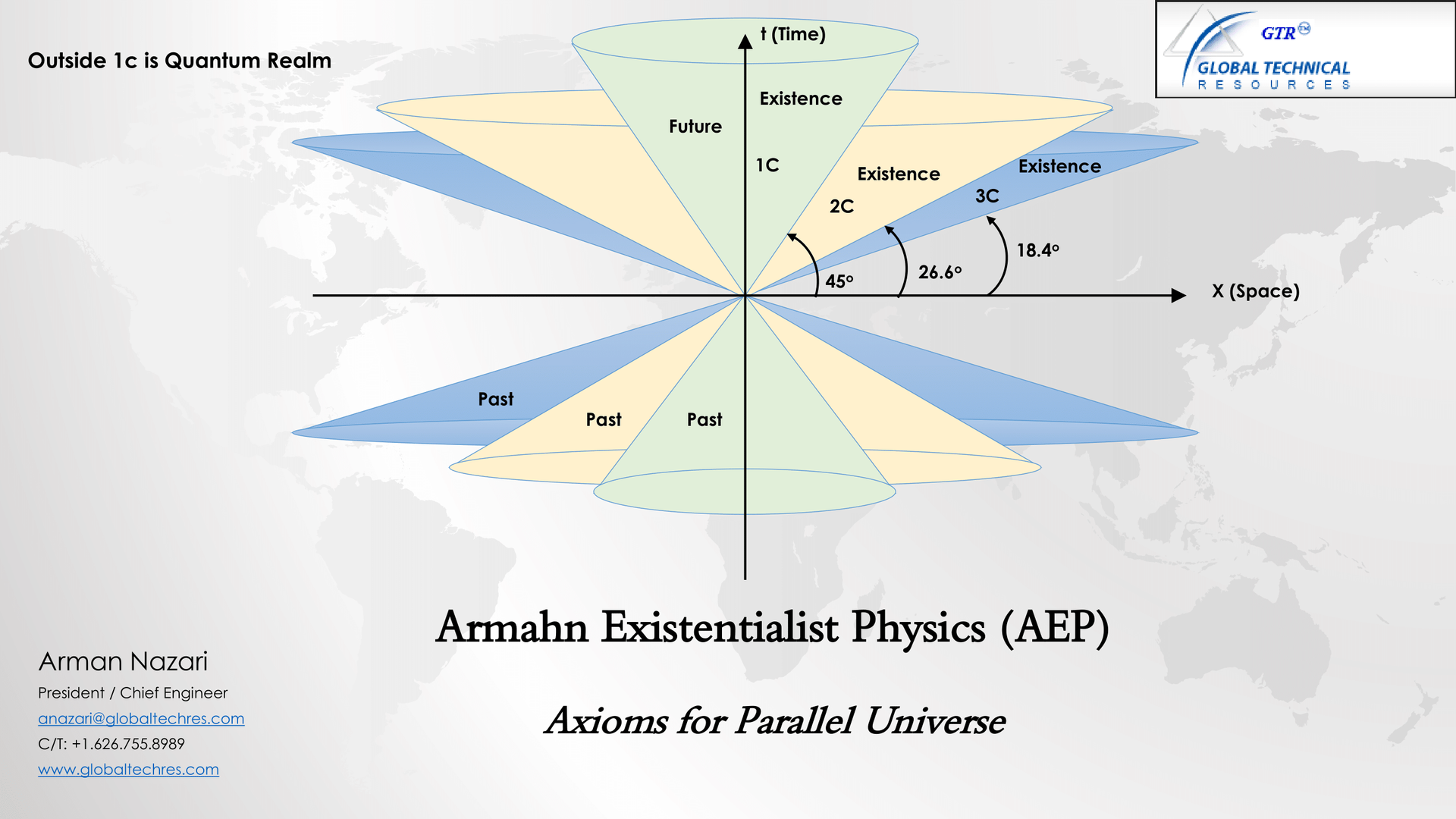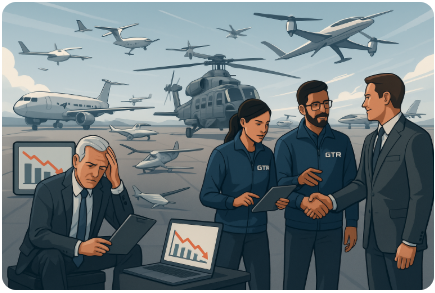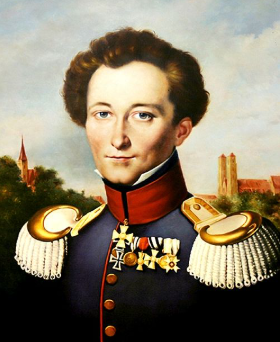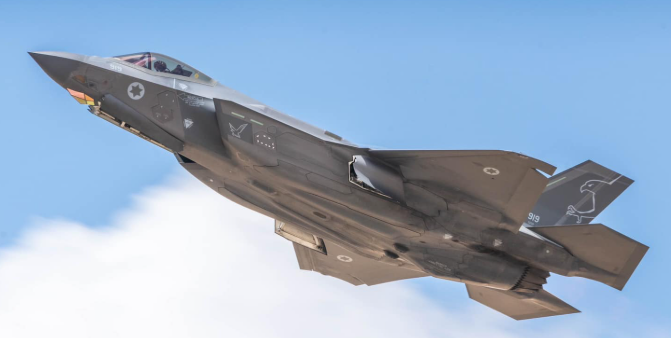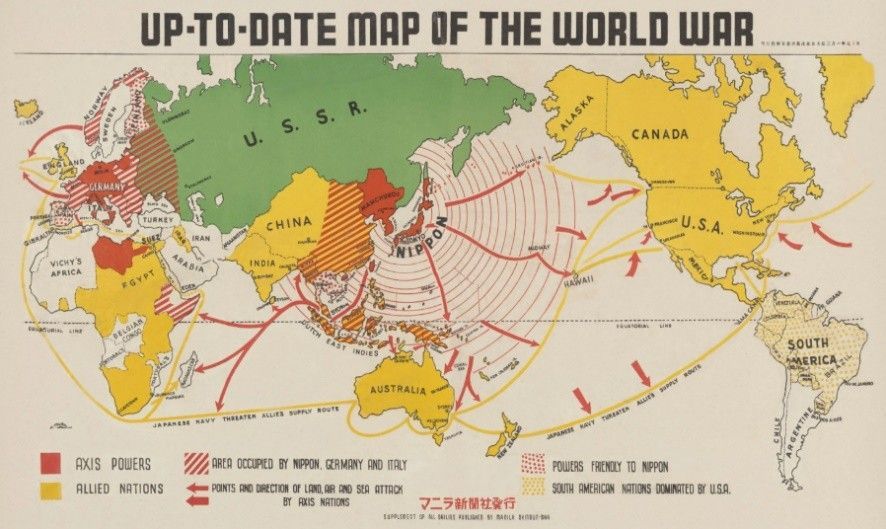ARTICLES
Follow Us
Be the first to know
Russia’s Eternal Return: From Tsarism to Eurasianism – The Ideological Arc of Expansion
By:
Arman M Nazari
President,
Global Technical Resources | Aerospace & Defense SME
I. Introduction
Russia has been many things to many people: a bastion of Orthodox Christianity, the heart of a proletarian revolution, a reclusive empire, a belligerent revisionist power, and, most recently, a neo-traditionalist Eurasian hegemon in the making. Across centuries, Russian political identity has mutated through a series of ideological frameworks, each professing to secure the nation’s destiny, yet each crumbling under the weight of its own contradictions. From the divine-right autocracy of the Romanovs to the messianic fervor of the Bolsheviks, from the apocalyptic vision of Duginism to the geopolitical maneuvering of modern Eurasianism, Russia's ideologies have consistently collided with historical, cultural, and material realities.
This article explores the evolution of Russian ideologies through a Hegelian dialectic: examining each as a thesis that produced its own antithesis, ultimately yielding a synthesis or collapse. Moreover, we investigate how these ideologies drew from distinct cultural roots within Russian society and how each shaped (and was shaped by) Moscow’s geopolitical engagements, particularly its balancing acts with China, India, and the United States, and its friction with Germany, Japan, and the Islamic Republic in Irahn.
Underlying this ideological evolution is a deeper truth: culture and politics do not emerge in isolation. They are the by-products of political economy, the structure of ownership, production, labor, and state power. In any ideological framework, politics exists to protect the political economy. Whether safeguarding serfdom, central planning, oligarchic capitalism, or energy-based autarky, Russia’s political superstructures have always reflected and reinforced its economic base. Understanding each ideology requires decoding how it served the material interests of dominant classes and geopolitical ambitions.
II. Tsarist Autocracy: Orthodoxy, Empire, and the Frozen Time
A. Ideological Core
The Tsarist era was characterized by the doctrine of "Orthodoxy, Autocracy, and Nationality," formulated by Sergey Uvarov in the early 19th century. Under this triad, the Tsar derived absolute power as a divinely anointed sovereign, supported by the Russian Orthodox Church and the mission of unifying the Slavic world. Expansion was not merely political or economic, it was spiritual, civilizational.
B. Cultural and Economic Roots
The cultural roots of Tsarist ideology trace back to two major influences: Byzantium and the Mongol-Tatar yoke. After the fall of Constantinople in 1453, Muscovy adopted the mantle of the "Third Rome," positioning itself as the last protector of Christendom. Meanwhile, the authoritarian centralization techniques learned under Mongol rule formed the administrative and fiscal backbone of the empire.
The political economy of the Tsarist regime was based on serfdom, feudal estates, and agricultural extraction. Serfs were legally tied to landowners, who in turn owed loyalty to the Tsar. The state's role was to protect this hierarchy by suppressing rebellion, limiting mobility, and preventing economic liberalization. The Orthodox Church sanctified the order, reinforcing cultural norms of obedience and spiritual redemption through suffering.
Russian Orthodoxy fused with Slavic identity and territorial expansionism to form a deeply ingrained imperial ethos. This outlook made the Russian Empire resistant to liberal ideas, viewing Western parliamentary and capitalist systems as morally decayed.
C. Geopolitical Expansion
The Tsarist Empire expanded aggressively: eastward into Siberia, southward into the Caucasus and Central Asia, and westward toward Europe. It engaged in the "Great Game" against Britain in Persia and Afghanistan and fought the Ottomans repeatedly over Black Sea access and Orthodox protection.
Naval expansion in the Baltic and Black Seas paralleled the idea of being a maritime power without ever achieving the blue-water dominance of Britain or Spain.
D. Dialectical Contradictions
The ideological contradiction lay in the empire’s need for modernization juxtaposed with its autocratic rigidity. The reforms of Peter the Great and Catherine the Great introduced Western technology and Enlightenment ideals, but always within a tightly controlled framework.
- Enlightenment vs Orthodoxy
- Bureaucratization vs Personal Rule
- Serfdom vs Industrial Labor
These contradictions culminated in a rigid political economy that could not adapt to the needs of industrialization. The state protected the landed gentry even as railroads, factories, and urban labor markets emerged. The result was a society torn between the old feudal hierarchy and the new industrial proletariat, a contradiction that exploded in the revolutions of 1905 and 1917.
III. Soviet Communism: The Red Messiah and the Icebreaker of Revolution
A. Ideological Core
Marxism-Leninism redefined Russian identity through a radically different lens. The divine monarch was replaced by the proletarian vanguard, the Orthodox Church by scientific atheism. Yet the imperial impulse remained, now draped in the red banner of internationalism.
The Bolsheviks sought to accelerate history, believing that the class struggle would yield a stateless utopia. Lenin's doctrine of democratic centralism and later Stalin's command economy transformed the Russian state into a mechanized leviathan.
B. Cultural and Economic Roots
Though nominally internationalist, Soviet ideology borrowed heavily from Tsarist precedents:
- Centralized bureaucracy
- Secret police (Cheka/NKVD/KGB as successors to the Okhrana)
- Expansionist military strategy
- Messianic destiny (World Revolution instead of Third Rome)
The USSR’s political economy centered on collectivized agriculture, five-year industrial plans, and state monopoly over production. The Communist Party served as both a managerial elite and a political enforcer. Culture was subordinated to ideology: art became Socialist Realism, science became dialectical materialism, and family became a tool of state reproduction.
Economic output was geared toward heavy industry and military production rather than consumer welfare. The political system existed to enforce this allocation of labor and capital, and dissent was equated with treason.
C. Geopolitical Reach
The Soviet Union established a buffer of satellite states in Eastern Europe, supported revolutionary movements globally (Vietnam, Angola, Cuba), and engaged in a Cold War struggle with the United States.
- Warsaw Pact = new imperial periphery
- COMECON = economic sphere of influence
- Arms race and nuclear brinkmanship = existential deterrence
D. Dialectical Contradictions
- Egalitarianism vs Party Elitism
- Internationalism vs Russian Chauvinism
- Industrialization vs Agricultural Crisis
- Atheism vs Folk Beliefs and Nationalism
These contradictions emerged from the structural gap between ideology and economy. The promise of worker empowerment masked the reality of bureaucratic control. The state claimed to represent the proletariat while acting as an extractive apparatus. When Gorbachev tried to resolve the contradictions through perestroika and glasnost, the system collapsed under its own weight.
IV. Duginism: The Fourth Political Theory and Occult Geopolitics
A. Ideological Core
Alexander Dugin's ideology rejects liberalism, communism, and fascism as relics of the modern age. His "Fourth Political Theory" synthesizes traditionalism, spiritual nationalism, and Heideggerian existentialism into a vision of Russia as a "civilizational pole."
He argues for a metaphysical war between "Atlantis" (liberal, sea-based empires like the USA and UK) and "Eurasia" (land-based spiritual empires like Russia).
B. Cultural and Economic Roots
Duginism draws from the intellectual underground of Russian esotericism:
- Ilyin's Christian authoritarianism
- Old Believer mysticism
- Slavic neopaganism
- Heidegger's anti-modernism
Its political economy is unclear, often presented as an anti-capitalist and anti-communist blend favoring spiritual over material development. In practice, however, Duginism aligns with oligarchic capitalism. The state promotes nationalism, while billionaires extract oil, gas, and strategic minerals.
Thus, while the ideology calls for a return to metaphysical truths, it functions to defend the post-Soviet rentier economy.
C. Geopolitical Influence
While not a state ideology per se, Duginism has deeply influenced Russian narratives:
- Justification of Crimea annexation
- Framing Ukraine as a spiritual conflict zone
- Support for Assad as a civilizational ally
- Outreach to European far-right and American alt-right
It also advocates cyber warfare, information control, and spiritual warfare as tools of geopolitical dominance.
D. Dialectical Contradictions
- Traditionalism vs Use of AI and Cyberwar
- Anti-Modernism vs Technocratic State
- Orthodox Christianity vs Pagan Symbolism
These contradictions reveal the instrumental use of ideology: Duginism acts more as a soft-power narrative than a material program. It cannot regulate political economy, but it legitimizes the ruling class by masking imperial ambitions in spiritual language.
V. Eurasianism: The Geopolitical Pragmatism of the 21st Century
A. Ideological Core
Eurasianism posits Russia as a distinct civilization, neither East nor West. It advocates for a multipolar world and integration with former Soviet republics through the Eurasian Economic Union.
It is less mystical than Duginism but shares its skepticism of the West.
B. Cultural and Economic Roots
Eurasianism is a rebranding of the Soviet legacy for a neoliberal age:
- Soviet nostalgia
- Imperial memory
- Multinational heritage (Slavs, Turkic peoples, Caucasians)
Economically, it supports state capitalism, natural resource export, and infrastructural integration via pipelines and railways. It attempts to create a Russian-centered regional order that mirrors China’s Belt and Road.
The political economy is based on energy rents, sovereign wealth funds, and limited privatization under state control. Politically, Eurasianism justifies authoritarian governance as necessary for cultural preservation.
C. Geopolitical Practice
- Creation of CSTO and EEU
- Deepening ties with China (Belt and Road integration)
- Energy diplomacy with Europe and the Middle East
- Strategic ambiguity with India
D. Dialectical Contradictions
- Russian Nationalism vs Pan-Eurasianism
- Integration vs Control
- Sinophobia vs Sino-Russian Cooperation
These contradictions reflect a deeper structural conflict: Russia wishes to be a hegemon, but its economic tools (oil, gas, arms) are depleting. Its partners increasingly look eastward, not to Moscow. Eurasianism thus struggles to maintain coherence as a geopolitical project.
VI. Russia and the Islamic Republic in Irahn: A Relationship of Shadows
While ideologically distinct, Russia and the Islamic Republic in Irahn share geopolitical goals: undermining U.S. influence, preserving authoritarian regimes, and resisting Western liberalism.
A. Areas of Cooperation
- Syria: Joint support of Assad
- Arms trade: Drones, missiles, and military technology
- Energy coordination: OPEC+ dialogues
- Intelligence sharing
B. Dialectical Contradictions
- Russia supports Israel’s deconfliction demands in Syria, while Irahn seeks Israel’s destruction.
- Orthodox Christian Russia vs Shiite theocracy
- Competing influence in the Caucasus and Central Asia
The economic base of both regimes drives the alliance: oil dependency, sanctions circumvention, and need for foreign currency. Yet religious and strategic contradictions keep it shallow.
VII. Geopolitical Chessboard: Russia Between Giants
A. China
- Deepening trade and defense ties
- Russia supplies energy, China supplies technology
- Fear of becoming Beijing’s junior partner
B. India
- Legacy of Soviet alignment
- Arms supplier, nuclear partner
- India’s alignment with the West complicates this
C. USA
- From Cold War adversary to hybrid warfare target
- Sanctions, NATO expansion, cyber conflict
- No ideological rapprochement in sight
D. Germany and Japan
- Germany: From energy partner to sanctions leader
- Japan: Territorial disputes (Kurils), balancing U.S. interests
Russia finds itself increasingly cornered, with limited true allies and multiple fronts of tension. Its political economy, based on energy exports and elite patronage, limits flexibility. Ideologies serve to shield this fragility, not solve it.
VIII. Conclusion: Toward a Post-Ideological Russia?
Russia has attempted to synthesize empire, ideology, and culture across centuries. Each framework, Tsarism, Communism, Duginism, Eurasianism, attempted to transcend its contradictions but ultimately collapsed or morphed.
What unites them all is their function: each ideology was designed to protect a specific political economy. Tsarism preserved feudal extraction; Communism secured the command economy; Duginism mystifies oligarchic capitalism; Eurasianism masks economic stagnation with geopolitical bravado.
Today, Russia faces a spiritual and strategic crossroads. No ideology has provided a sustainable synthesis. The contradictions of modern governance, demographic decline, technological lag, and geopolitical encirclement remain unresolved.
A truly post-ideological Russia may need to abandon the fantasy of exceptionalism and embrace a more pragmatic, internally coherent path. Until then, the dialectic of expansion and collapse continues.
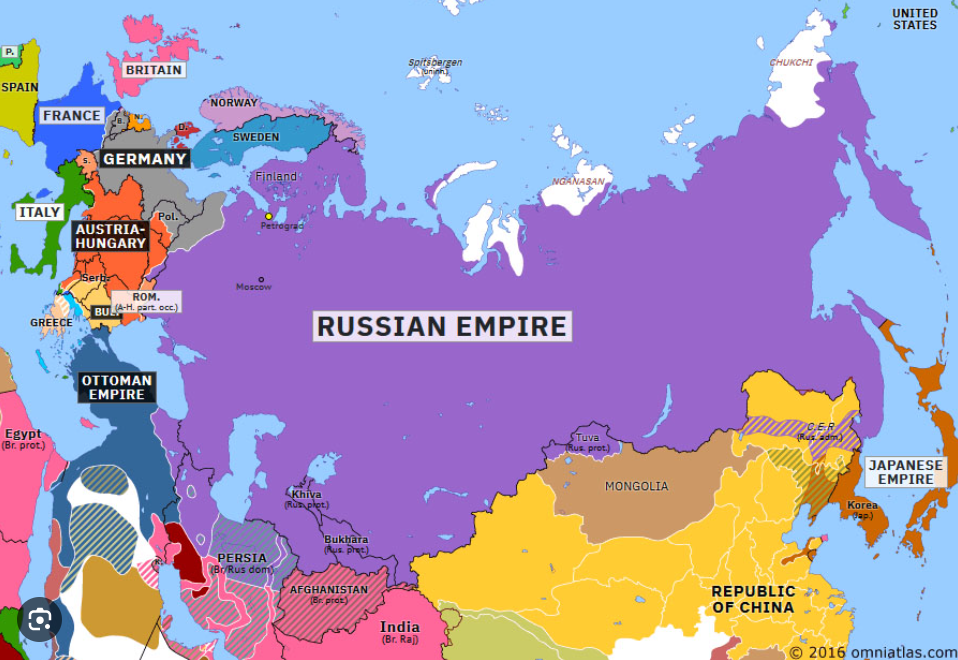
February Revolution | Historical Atlas of Northern Eurasia (8 March 1917)
